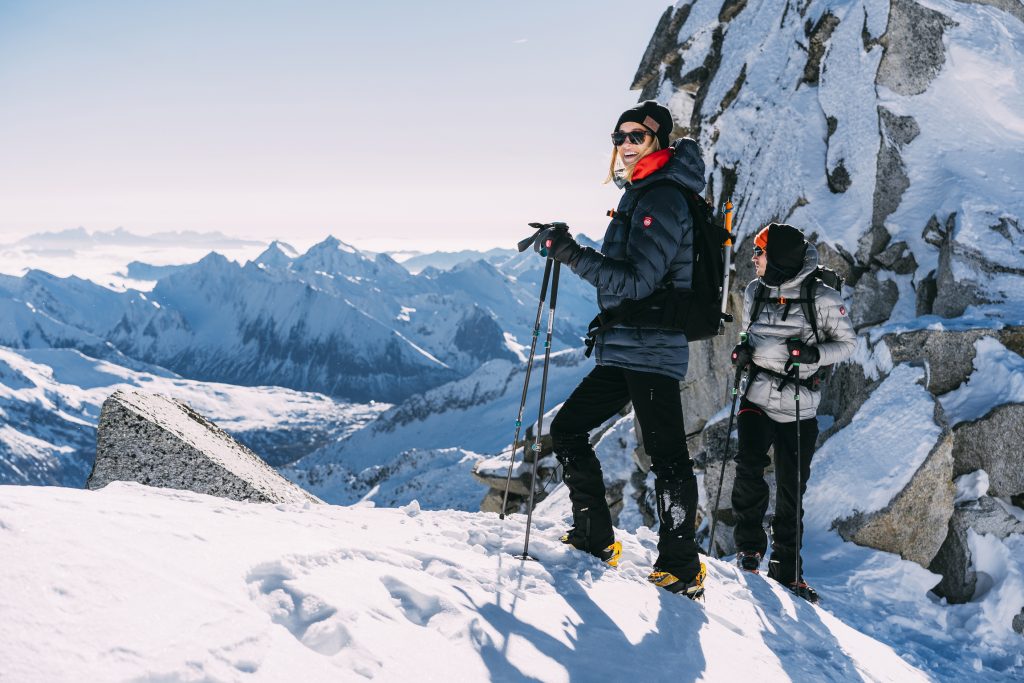
WHY ARE DOWN JACKETS SO EXPENSIVE?
Insulated jackets filled with natural down are distinguished by their lightweight, excellent thermal insulation, ability to compress into a small package, and... high price. The amount displayed on the tag is a result of these qualities. When purchasing a down jacket, you pay for a quality that no synthetic invention can provide. Anyone who has experienced the benefits of a down jacket firsthand will admit that they would willingly spend any amount on it again.
WHAT WILL YOU LEARN FROM THIS POST?
- Why do down jackets have a (relatively) high price?
- What contributes to the price of a down jacket?
- Is a down jacket a long-term investment?
IN BRIEF
The price of down clothing is completely justified: jackets, sweaters, or shorts filled with natural down provide thermal comfort that no synthetic insulation can match. In addition, they are super lightweight and can be compressed into a small package, which is important for mountain hikes or skiing trips. Buying a down jacket is a significant investment, but it's an investment for years - properly cared for natural down can retain its properties for even several seasons.
DOWN JACKET: UNRIVALED IN THE OUTDOORS
Mountain hiking is not a cheap sport. Of course, initially, you can go on the trail wearing anything: a fleece, sweatpants, and market-bought shoes that only pretend to be trekking shoes. However, as your appetite grows, you aim higher and higher. Once you conquer one summit, you immediately desire to climb another: higher, more challenging, more spectacular. Demanding terrain or unfavorable weather quickly expose all the shortcomings of inappropriate clothing. Sooner or later, everyone realizes that clothing really matters in the mountains. It is true that climbing peaks requires the power of your own muscles - but with the right clothing and reliable boots, you can do it more efficiently, faster, and safer.
Therefore, you gradually add more elements to your outdoor gear: boots that can handle more challenging trails, windproof pants, breathable shirts, and a jacket that protects against rain. Among these items, sooner or later, you will also find down clothing. There is no warmer and lighter jacket than a down jacket. It is literally made for winter mountain hikes. In terms of lightweight, elasticity, and thermal insulation, it leaves its synthetic competitors far behind.

NATURAL DOWN - WHAT'S ALL THE FUSS ABOUT?
Natural down is a brilliant invention of Mother Nature. People discovered this thousands of years ago when they domesticated wild ducks and geese. The high resistance to even the coldest frosts that these birds are known for is due to the fine fluff that grows close to their skin. It has a unique structure, resembling a fluffy ball with irregularly branching individual fibers. It is this irregular, three-dimensional structure of a single cluster of down that accounts for its excellent thermal insulation properties.
This happens because there is plenty of free space between the down fibers where air accumulates. It is this air, not the down itself, that acts as an excellent insulator, protecting against the cold - more effectively than any synthetic insulation. But this structure of down also brings two other benefits: lightness and elasticity. Both are invaluable in the mountains.
A good down jacket weighs almost nothing - about 300 g, of which half is the weight of the outer fabrics, zippers, and other accessories. It can also be folded, compressed into a small package, so it takes up almost no space in a backpack. When unfolded, the down immediately regains its elasticity, and the jacket looks the same as before folding - compression does not affect its condition and properties in any way.
A COSTLY MATERIAL
Although outdoor industry specialists have long been trying to create a synthetic fill that matches down in terms of thermal insulation, lightness, and elasticity, they have not succeeded yet. Natural down, as expected, cannot be manufactured, and the process of harvesting it is long and complex. Therefore, the final price of a jacket includes, among other things, the difficulty in preparing the down material for use. Additionally, higher-quality down is more expensive - this is because the best geese and ducks for down are found only in one country in the world... Poland! Polish down is exported to Japan, Canada, China... This demand affects the price. However, the main focus of Polish breeding is still the German food market.

DOWN JACKET - A LONG-TERM INVESTMENT
Of course, the quality (and price) of a down jacket is determined not only by the filling but also by the outer and inner fabrics. They largely determine the durability of the down jacket. If they are of low quality, the jacket will quickly wear out or tear.
It is worth knowing that natural down can maintain its properties for a long time. The key here is proper care, including washing and drying. Therefore, it is important that the outer fabric, as well as zippers and snaps, are of high quality to match its longevity.
WHAT AFFECTS THE PRICE OF A DOWN JACKET?
Not all down jackets are created equal - not all of them provide the same high thermal insulation or compressibility. Two factors primarily influence this:
- Every down insulation consists of a mixture of down and feathers. This mixture can have different proportions - the more down, the better, as feathers reduce the effectiveness of insulation. In higher-quality jackets, the most common proportion is 90-95% down and 10-5% feathers. It is worth noting that goose down is more elastic than duck down, and therefore, warmer. The most highly regarded down is obtained from Polish Kołuda White Geese, which we use in Pajak jackets.
- Elasticity, measured in cubic inches per ounce (cuin), indicates the volume that an ounce (28 g) of down occupies when maximally expanded and then compressed. The higher the elasticity, the lighter and warmer the down garment is, and the easier it is to compress. A good result is a loft value of 600 cuin for natural down (the same down as hydrophobic will have an artificially boosted loft of 700 cuin). However, the highest-quality goose down can achieve elasticity levels of up to 900 cuin!
There's no hiding the fact that a down jacket is quite expensive. However, it is a long-term investment. Natural down surpasses other solutions in terms of durability and functionality. If you're looking for reliability in challenging conditions, it's the best choice possible. You can find high-quality down-insulated clothing with goose down at pajaksport.pl.
Image source: pajaksport.pl